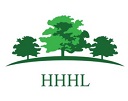



As well as scarce and rare butterflies and moths, Thetford Forest is home to insect species especially associated with conifer plantations. These include bark beetles; longhorn beetles; the pine weevil; the gall-lice; pine sawflies and wood wasps.
The Trident Beetle is abundant on sandy ground where it buries rabbit droppings as food for its larvae.
The rarer Scarabaeid makes balls of cow dung for its grubs while the Chrysomelid Beetle feeds on Lady's Bedstraw.
The Black-banded Spider-Hunting Wasp hunts wolf spiders, which it paralyses and then lays its eggs on its body. It requires open sand in direct sunlight where prey is abundant and in which it can excavate a brood chamber.
The Brush-Thighed Seed-Eater depends on the plant known as Fat Hen, a fast-growing annual associated with heavily disturbed ground, in sandy situations.
Solitary bees; digger wasps and sand wasps burrow into the sandy soil which is essential for their life cycle.
A proportion of dead trees are left standing after clearfelling, providing they are regarded as safe because they are important standing deadwood habitat. Fallen trees are left to rot down where they fall, as shaded rotting wood is important habitat for invertebrates. Areas of chalky and sandy ground are left free of trees as ideal insect habitat.
Dragonflies. Water Boatman and other aquatic insects are found in the river valleys and there are ground-dwelling spiders which thrive among the plantations.
In all, there are 37 red data invertebrate species and 129 nationally scarce invertebrate species associated with the dry grassland, wetland and temporary pools and sandy tracks within the Forest.